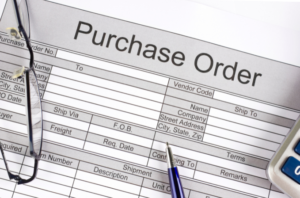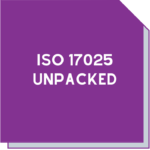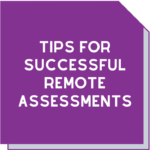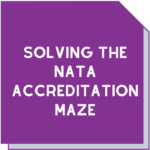Marvin’s Guide to Quality – part 2
written by Maree Stuart
 Welcome back!
Welcome back!
In our last episode, we explored how to enhance Quality Management through automation and digitisation with a little help from Marvin the Paranoid Android.
We discussed how digitisation and technology could help with managing people, documents, and QC. This week we’ll look at facilities, equipment and purchasing.
Facilities management
Facility management is a huge area and one where technology can definitely help to improve quality.
It may sound intrusive, but cameras working in concert with AI can help labs manage things. For example, how many people are in a particular space at any one time? How often do they access a piece of equipment? Some technology can track where visitors go in a space, thus helping to preserve confidentiality. All these tools go to the management of Quality in a lab and improvement in workflow.
There are also technologies for managing temperature, humidity, light, and other environmental factors within a facility. Sometimes these factors are critical to the performance of testing. It might be that there is a desire to better manage the lab’s environmental footprint.
Technology like barcodes can help with tracking samples, equipment, and people. This kind of technology is often quite affordable and can dramatically help with workflow and to some extent, turnaround time.
Quality equipment
 Increasingly, equipment is run with software. But what about the basics like balances, pipettes, ovens, microwaves, sieves, and microscopes?
Increasingly, equipment is run with software. But what about the basics like balances, pipettes, ovens, microwaves, sieves, and microscopes?
Often there are battles about getting access to some of these items, and that’s where barcodes, cameras and AI can help. If you have one, the LIMS should capture the use of all items of equipment, including those basic items, for traceability purposes. Use the data in LIMS to get an analysis of usage of items of equipment. The analysis can help labs understand how often a piece of equipment is used, where it is used, and create greater efficiency in terms of use.
Think about how well you can export this precious data from the LIMS and analyse it. It may be that you have an opportunity for improvement begging to be recognised within that analysis.
Then there are the technical aspects of equipment. Things like what are the requirements for accuracy, precision, measurement uncertainty and calibration. You can use the basic wall chart (remember them?), a spreadsheet, or a specialised piece of software for asset management. But you do need to link this to the testing or calibration data coming out of your lab.
Calibration intervals
Calibration is incredibly important when it comes to equipment. Working out when to calibrate a piece of equipment should not be an arbitrary exercise. It should be based on data.
If you think about the multi-analyte instruments in use in many labs these days, that data is extensive but is also a rich source of information to help make this decision. Just because a manufacturer says to calibrate a piece of equipment once a year, doesn’t mean you have to follow that advice. What about if the rate of use is much less than that assumed by the equipment manufacturer? Or if the types of samples typically thrown at the instrument adversely affect the performance of the instrument?
The data from quality control and measurement of attributes such as drift in calibration checks will help labs determine if all is well or if this warrants a different calibration regime. How easy is it to get this data and analyse it from your lab’s system?
Excel spreadsheets and plotting data manually on control charts are two options. Excel helps with statistical analysis of the data if you know how to use it. A LIMS might also be able to do this automatically and provide a periodical report. This will take some of the manual extraction and manipulation in Excel away from the process. Whatever tool is used, make sure you use the data to set realistic, cost-effective calibration regimes which help keep risk levels with the lab’s comfort zone.
Consider if these various systems can be integrated with the LIMS or other information management systems you use. Integration will help with analysis of this rich source of data for identifying improvements and risks. It may be just a matter of asking the software provider. Essentially, if the software has an API key, then many things are possible!
Purchasing and supplier management
 There are many options open for facilitating purchasing processes and supplier management. These range from a purchase book through to an Enterprise Resource Management System like SAP. Each represents a choice, and you need to consider these decisions with a view to the value, risk, and cost of the system.
There are many options open for facilitating purchasing processes and supplier management. These range from a purchase book through to an Enterprise Resource Management System like SAP. Each represents a choice, and you need to consider these decisions with a view to the value, risk, and cost of the system.
However, there are some simple things you can do if the lab is reliant on manual records for purchasing and suppliers are a headache.
- Investigate the features of your financial management software like Xero. Can you extend it’s use beyond paying your staff and managing invoices and expenses? Perhaps it can also capture and manage your suppliers and inventory.
- What does your supply chain look like? Lately, it’s probably taken a battering. Do you need to maintain a higher stock level of consumables to ensure that you can do testing and calibration within the promised time? How would you know what levels are just right? Technologies like barcodes and inventory management software might help here. Or even keeping a humble spreadsheet capturing use of consumables as a direct consequence of numbers of tests that have been performed and analysis of this data might do the trick.
That’s quite the list of possibilities!
Remember that the aspects of quality that are important in labs include traceability, competence, validation of processes, facilities and equipment, knowledge management and monitoring of quality attributes through quality control activities.
We have various tools to help us manage these aspects. Tools such as basic quantitative statistical techniques and other data collection and analysis tools, such as auditing and management review.
This series of articles provides lots of ideas for improving these aspects but that doesn’t mean all the ideas are right for you.
The way to work through this is to start by understanding the current processes in place in the lab. Gather data on how well these processes perform. If there are obvious opportunities to improve, think about what the options might be.
A balancing act
In considering the options, understand that this will be a matter of balancing value, risk, and cost to deliver a desired level of quality. There could even be some automation of this process using software that is already available to the lab. Run the options through your Improbability Drive to take you to a better place, and not just to the planet Brontitall.
But it is essential that, in making use of any these options, organisations look fairly and squarely at the data they collect. Remove those Peril-sensitive Sunglasses and you’ll foster both real and potential business improvement opportunities.
In fact, it’s only through this proactive approach to quality management that you’ll make real progress towards working better and smarter in the lab and achieving Quality.
If you’d like a second set of eyes or would like to discuss any of your Quality challenges, contact Maree (0411 540 709), Diane (0402 012 781) or email info@masmanagementsystems.com.au to set up a confidential discussion. You can also head to our website and check out the range of services we offer.
While you’re reading this, we’ll be attending the RACI Hitchhiker’s Guide to Laboratory Quality
We’re proud to be sponsors of this event. We’ll be sharing some of the information and insights in future articles and across our socials. Be sure to follow us to stay up-to-date!
Remember, you don’t have to do this alone!
Download the article Marvin’s Guide to Quality part two





